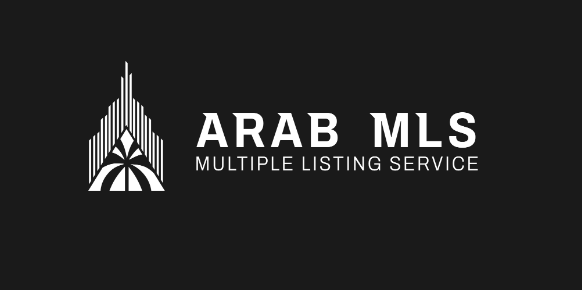In an era where prospective homebuyers increasingly turn to digital channels for their initial property searches, real estate professionals must embrace social media as an essential marketing tool. Traditional Multiple Listing Service (MLS) entries, while still vital, no longer suffice in isolation; integration with platforms such as Facebook, Instagram, LinkedIn, and emerging networks can dramatically broaden exposure and drive genuine interest. By tailoring content to each network’s strengths, realtors transform static listings into dynamic showcases that capture the attention of today’s visually driven and socially connected audience.
Understanding the Digital Landscape
The array of social networks presents distinct audiences and expectations. On Facebook, local community groups and targeted advertising help connect listings with buyers seeking neighborhood insights. Instagram’s emphasis on imagery and short-form video caters to users scrolling for inspiration and lifestyle cues. LinkedIn fosters professional credibility, allowing agents to share market analyses or case studies alongside featured properties. Meanwhile, platforms like TikTok and YouTube accommodate longer storytelling through virtual tours or behind-the-scenes glimpses of staging and renovation. Recognizing each channel’s unique rhythm and user behavior represents the first step toward effective digital engagement.
Crafting Platform-Specific Strategies
Savvy realtors avoid one-size-fits-all messaging by designing posts that resonate with the typical user on each network. A Facebook update announcing a new listing might include a concise description of the property’s most compelling features, an enticing cover photo, and a link directing followers back to the MLS detail page. In contrast, an Instagram Story highlights the kitchen’s marble countertops or the backyard’s mature landscaping through a series of polished images, each marked with location tags and interactive stickers inviting viewers to request a private showing.
On LinkedIn, professionals appreciate data-driven insights. An agent might publish a brief report on shifting mortgage rates or neighborhood price trends, concluding with a spotlight on an MLS listing that illustrates those market conditions in real time. TikTok videos, when executed well, distill property tours into thirty-second clips set to trending audio, capturing attention while demonstrating architectural highlights. By aligning messaging with each platform’s conventions, real estate agents avoid the pitfall of generic posts that fail to inspire action.

Visual Storytelling and Multimedia Content
Across every digital channel, high-quality visual content reigns supreme. A single crisp photograph can convey far more than paragraphs of text. Professional images showcasing natural light, thoughtfully arranged furnishings, and clear sightlines encourage viewers to engage. For listings featuring dramatic interiors or unique design elements, immersive 3D walkthroughs or drone footage underscore spatial relationships and contextualize proximity to parks, schools, or commercial districts.
When creating videos, agents should balance narrative clarity with brevity. Opening shots of the door or curb appeal draw users in, while a flowing sequence guides them through living areas, bedrooms, and outdoor spaces. Voiceover narration or on-screen captions deliver essential details—square footage, renovation dates, or special fixtures—without relying on platform-specific text fields. Embedding these videos on YouTube and sharing snippets on Instagram Reels and Facebook posts multiplies visibility and accommodates viewers’ preferred formats.
Compelling Copy and Engagement-Driven Captions
Visual excellence loses impact if descriptions fail to engage. Captions that accompany multimedia content must go beyond listing amenities to tell a story. Instead of simply stating “three bedrooms, two baths,” an agent might portray how morning light floods the master suite, encouraging readers to imagine sipping coffee by the panoramic window. Emotional resonance—whether through historical context, personal anecdotes about nearby community events, or forward-looking investment potential—lends authenticity and encourages likes, comments, and shares.
Language choice also influences searchability within platforms. Strategic use of keywords—neighborhood names, architectural styles, or lifestyle descriptors—helps users discover properties through internal search functions. Yet writers must avoid mechanical repetition; weaving terms into natural prose preserves readability. Agents who cultivate a distinctive voice gain more traction than those recycling vanilla phrases across dozens of posts.
Harnessing Organic Reach and Community Connections
While paid promotion amplifies reach, organic engagement remains the foundation of lasting relationships. Successful agents dedicate time each day to respond thoughtfully to comments, answer direct messages promptly, and participate in local online groups. Sharing timely updates about open houses, hosting live Q&A sessions on Facebook or Instagram, and tagging local businesses—cafés, boutiques, or fitness studios—fosters goodwill and cross-promotion.
Community-focused content resonates particularly well. Agents might spotlight a nearby farmers’ market, profile a longstanding neighborhood bakery, or interview a school principal about upcoming events. By weaving MLS listings into broader stories about the community’s character, realtors position themselves as neighborhood experts rather than distant marketers. This authenticity encourages followers to share posts with friends considering relocation, expanding organic reach in a meaningful way.
Balancing Paid Promotion with Budget Constraints
Even modest budgets can yield significant returns when deployed strategically. On Facebook, sponsored posts tailored to a five-mile radius around a listing’s address attract highly relevant audiences. Instagram’s carousel ads allow multiple images or videos to display in sequence, offering varied perspectives on the property while ensuring that paid spend translates into deeper engagement metrics. LinkedIn Sponsored Content targets professionals relocating for work or exploring investment opportunities, marrying business and residential real estate marketing.
For those who cannot allocate funds, well-timed organic posts remain effective. Announcing an upcoming open house twenty-four hours in advance, sharing a photo series of a freshly staged living room, or posting a quick renovation update keeps followers invested. Collaboration with micro-influencers—local interior designers, home improvement bloggers, or neighborhood advocates—can produce barter-based campaigns where social currency substitutes for monetary exchange.
Ensuring Fair Housing Compliance
Promoting MLS listings on public platforms carries legal responsibilities. Agents must adhere to Fair Housing regulations by avoiding language that discriminates based on race, religion, gender, familial status, or other protected classes. Phrases suggesting exclusive suitability for young professionals or emphasizing particular demographic attributes risk falling afoul of antidiscrimination statutes. Instead, descriptive focus remains on the property’s physical features and community amenities open to all.
When incorporating neighborhood highlights, agents should present factual information—proximity to schools, transit connections, or recreational facilities—without implying limitations on who may occupy the residence. Including the proper disclaimers and equal housing opportunity logos in social media profiles and promotional materials further underlines a commitment to compliance and ethical practice.
Measuring Success through Analytics
Promotion efforts only gain traction when informed by data. Each platform offers insights into reach, engagement, click-through rates, and audience demographics. Agents who monitor which posts generate website visits or direct inquiries can refine future content accordingly. A listing video that yields high view counts but few calls may require stronger calls to action or clearer contact details, whereas a static photo that garners comments about the neighborhood indicates interest in location-based storytelling.
Cross-platform tracking tools streamline analysis, enabling a comprehensive view of how Facebook ads, Instagram Reels, and LinkedIn articles collectively contribute to lead generation. By establishing key performance indicators—whether new follower counts, direct messages requesting showings, or traffic to a dedicated landing page—real estate professionals maintain accountability and adapt strategies in real time.

Emerging Trends and Future Opportunities
The social media ecosystem continues to evolve, offering fresh avenues for MLS promotion. Augmented reality filters can overlay renovation ideas onto existing rooms, inviting users to visualize potential improvements. Live virtual open houses bridge geographic gaps for long-distance buyers, while shoppable property features allow visitors to click through to local furnishing retailers directly from a photo of a staged interior.
Voice-activated searches on smart speakers introduce new challenges around conversational keywords, prompting agents to craft captions and video scripts that mirror natural speech patterns. Integrating property chatbots on Facebook Messenger or Instagram Direct nurtures 24/7 engagement, guiding prospective buyers through preliminary inquiries and scheduling appointments in real time.
Embracing these innovations requires openness to experimentation and a willingness to learn from both successes and failures. Realtors who balance emerging technologies with proven content fundamentals—compelling storytelling, community engagement, and consistent branding—maintain relevance and stand out in a crowded marketplace.
Conclusion
Effectively promoting MLS listings on social networks demands more than periodic posts; it requires a strategic blend of visual excellence, engaging narratives, community involvement, and compliance vigilance. By adapting to each platform’s unique characteristics, crafting content that resonates with target audiences, and measuring impact rigorously, real estate professionals transform their digital presence into a powerful driver of leads and sales. As the industry advances, those who master the interplay between property data and social storytelling will secure a competitive advantage, ensuring that every listing finds its way into the feeds—and ultimately, the inboxes—of the right buyers.
Frequently Asked Questions about Utilizing Social Media Platforms to Promote MLS Listings
-
Why should real estate professionals integrate social media with their MLS listings?
Using social media extends a listing’s reach beyond traditional MLS portals. By showcasing properties on platforms where prospective buyers spend time, agents increase visibility, foster engagement, and drive traffic back to the detailed MLS entry or their websites. -
Which social networks yield the best results for property promotion?
Facebook tends to excel at community targeting and group outreach, while Instagram thrives on high-impact visuals and short-form videos. LinkedIn supports thought leadership and market insights, and newer channels like TikTok capture attention with creative, snackable property tours. Each platform appeals to distinct audiences and purposes. -
How can agents craft content that resonates on different channels?
Effective content aligns with each network’s user expectations. A Facebook post might emphasize neighborhood details and include a link to the full MLS page, whereas Instagram Stories focus on striking photos or quick video snippets tagged with location stickers. LinkedIn updates combine data-driven commentary with a featured listing to underscore professional expertise. -
What role do live events and interactive features play in promotion?
Live streams and interactive features such as polls, Q&A stickers, and virtual open houses create immediate two-way connections. Viewers appreciate real-time access to agents’ insights, and the resulting engagement boosts organic reach by alerting more followers to the event and encouraging shares. -
How can real estate professionals ensure compliance with housing laws on social media?
Agents must avoid language that implies preference or limitation based on protected characteristics. Descriptions should focus strictly on property features and factual neighborhood attributes. Including equal housing opportunity statements and adhering to each platform’s advertising policies further demonstrates a commitment to legal and ethical standards. -
Which metrics indicate successful social media promotion of MLS listings?
Key indicators include post reach, engagement rates (likes, comments, shares), link clicks to the MLS detail page, direct inquiries via messages, and ultimately, scheduled showings or leads generated. Tracking these metrics over time enables agents to refine their strategies and allocate resources to the most impactful activities. -
Can agents achieve significant results without a paid advertising budget?
Organic growth remains achievable through consistent posting of high-quality images and videos, active participation in local groups, and collaboration with neighborhood influencers or related businesses. Prompt responses to comments and messages build community credibility and can drive word-of-mouth referrals without ad spend. -
What best practices help maintain a cohesive brand presence across platforms?
Agents should use consistent naming conventions, profile imagery, and color schemes to reinforce brand recognition. A unified voice—whether conversational, data-oriented, or inspirational—across captions and updates cultivates trust. Regular audits of profile information ensure that links, contact details, and listing statuses remain accurate.













